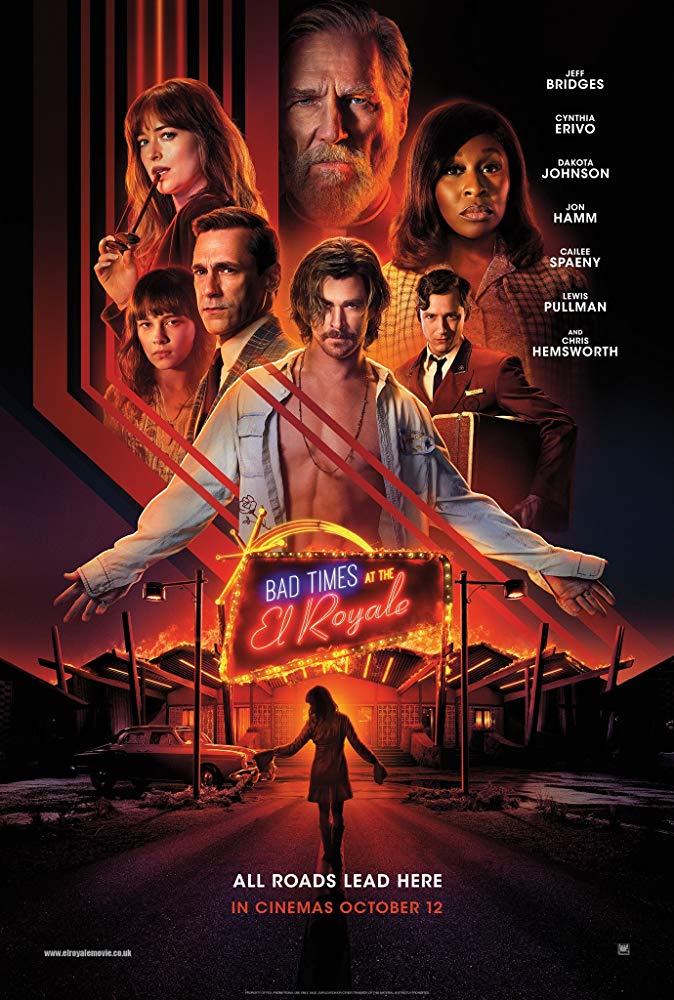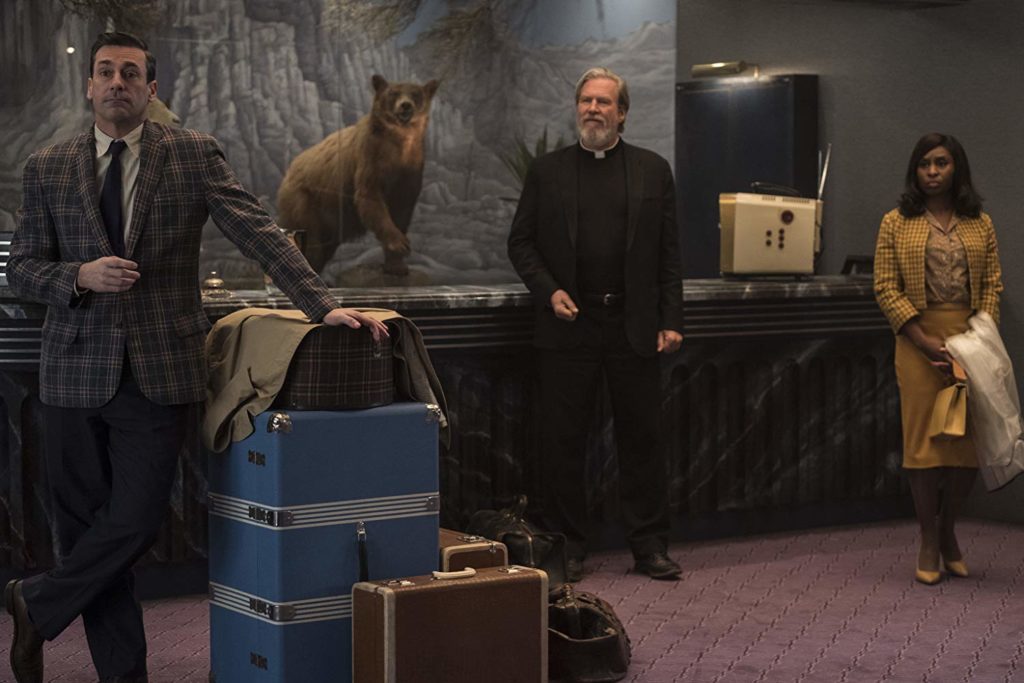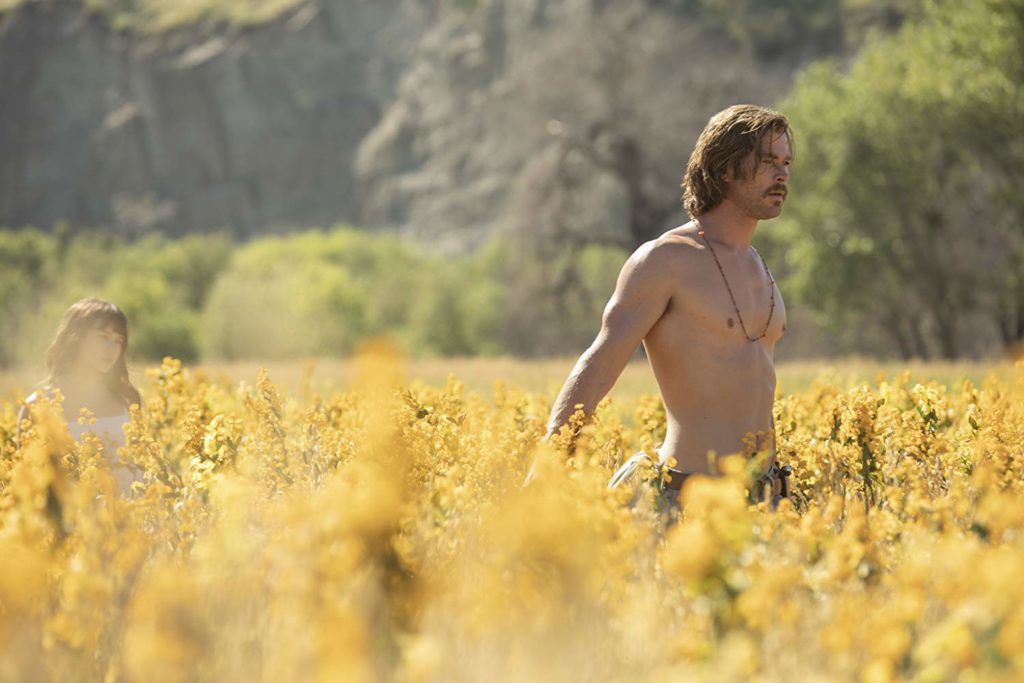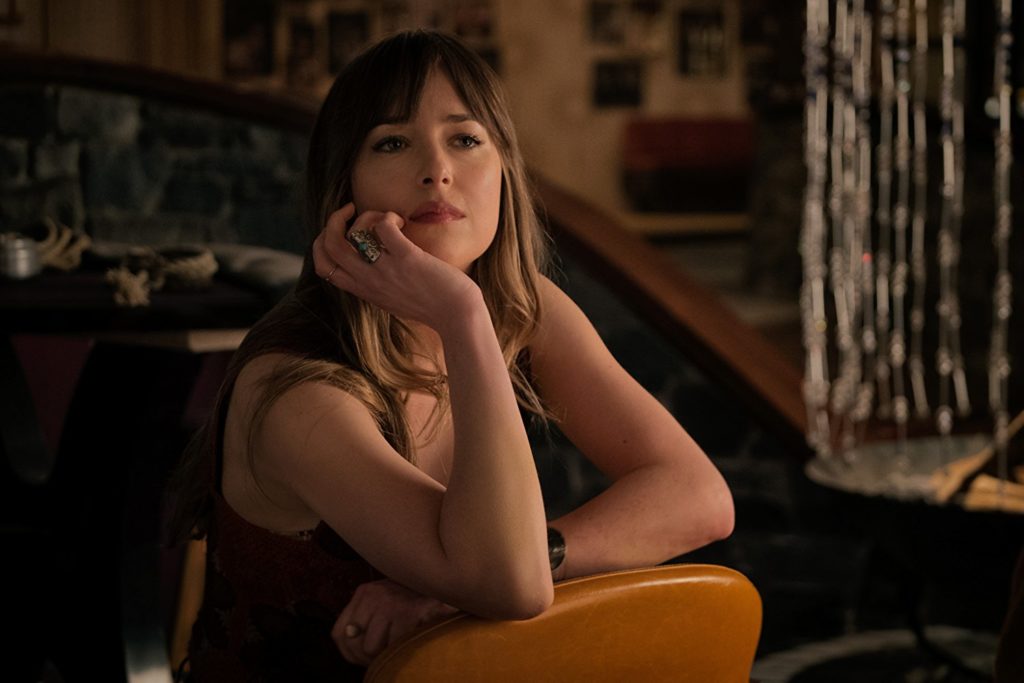Drew Goddard’s Bad Times at the El Royale tells the story of seven people colliding in a motel. Though the film is flawed in many ways, it is enjoyable due to its colorful gallery of characters, played by a terrific cast: Chris Hemsworth (never looking sexier), Dakota Johnson (as sexy as usual), Jeff Bridges (stealing most scenes he is in, as expected of the Dude), John Hamm (continuing to stretch), Lewis Pullman, Cailee Spaeny, and Cynthia Erivo (real discovery).

Chris Hemsworth, who appeared in Goddard’s directorial debut Cabin in the Woods (a better picture), just after his first turn as Thor, plays a dangerous character, a charismatic, would-be cult leader.
Casting Cynthia Erivo
Drew Goddard: Darlene Sweet is a lounge singer in the late 1960s. I knew I needed her to sing live. So much of it is not just about the singing, it’s about the act of singing and what it means to be an artist struggling to find her voice. It became crucial when we were casting. I said, “Listen, we will be singing incredibly complicated songs live, that we need to do over, and over, and over. We need somebody with real chops.” And so, we really just started scouring the world. I hadn’t seen “The Color Purple” Broadway revival but people speak of her performance with reverence. Anyone who was there says, “Oh, you should meet Cynthia, that’s the person for you.” So she came in and just started doing the scenes and I knew immediately. I just felt the hair stand up on the back of my neck. It was pretty exciting the day she walked in.

A Musical Film?
DG: It’s not a musical in the classical sense, but there are musical elements. We definitely have moments where we let the music tell the story.
Louis Pullman?
DG: He was another one where I just had a very specific thing I was looking for. His character, the El Royale employee Miles is integral to the story, and we needed someone that can take the audience on a real journey, in terms of emotional performance. It was one of those good old-fashioned casting searches. After meeting with lots of actors, Lewis came in and you just felt that immediately. The last time that happened, quite honestly, was when Chris Hemsworth walked in for “Cabin in the Woods.” You’re just looking for actors who inherently fit the role, and then also transcend the role.

Chris Hemsworth?
DG: We have a very healthy relationship. We’re very fond of one another.
Hemsworth as Charles Manson-type Character?
DG: It was all about finding something different for Chris. Chris got cast in “Thor” in the middle of making “Cabin in the Woods,” so I got to see this young actor just launched into the stratosphere. It’s been really fun to see how he has grown and changed, and yet, how he has also stayed exactly the same. He’s still the same wonderful, hardworking, emotional performer that I met almost a decade ago. I knew it was time for him to do something different. I was excited to write something that would give him a chance to explore darker territory. And I think he was probably eager to get to play something that’s little left of center from the sort of stuff he usually plays. It very much came together as we created the character of Billy Lee.

Writing for Chris Hemsworth?
DG: I don’t really think about actors when I’m writing, but every time I finish a script I look at it and the first thing is, “Who could Chris play?” When I’m writing I try to only think about the characters. But once I finished, he’s definitely one of the first people I called. I just love working with him so much.
Long Takes?
DG: There’s a theme of empathy running through the whole movie, in the sense that I was enamored with the idea that people you dismiss as one type of thing, you would learn more about them and have new affinity for them and that your allegiances to different characters would change as the movie progresses. Part of the way that works is to spend time with the characters, and spend time in somebody’s shoes. There’s no substitute for just sitting with someone as they’re experiencing it. We have a long take where Jon Hamm is discovering things in a corridor, and I wanted to put the people in his shoes, I wanted to feel what it is to discover this. I wanted to see what it feels like to be a voyeur in that moment. In order to do that, you really have to be with him. You have to tell the audience, we’re going to take our time and be with this man while this is happening.











